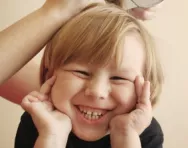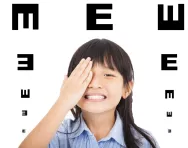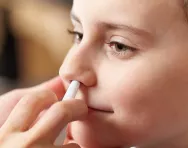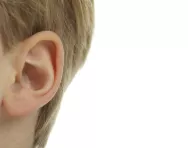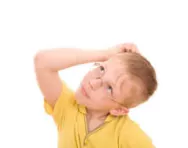Important update from TheSchoolRun
For the past 13 years, TheSchoolRun has been run by a small team of mums working from home, dedicated to providing quality educational resources to primary school parents. Unfortunately, rising supplier costs and falling revenue have made it impossible for us to continue operating, and we’ve had to make the difficult decision to close. The good news: We’ve arranged for another educational provider to take over many of our resources. These will be hosted on a new portal, where the content will be updated and expanded to support your child’s learning.
What this means for subscribers:
- Your subscription is still active, and for now, you can keep using the website as normal — just log in with your usual details to access all our articles and resources*.
- In a few months, all resources will move to the new portal. You’ll continue to have access there until your subscription ends. We’ll send you full details nearer the time.
- As a thank you for your support, we’ll also be sending you 16 primary school eBooks (worth £108.84) to download and keep.
A few changes to be aware of:
- The Learning Journey weekly email has ended, but your child’s plan will still be updated on your dashboard each Monday. Just log in to see the recommended worksheets.
- The 11+ weekly emails have now ended. We sent you all the remaining emails in the series at the end of March — please check your inbox (and spam folder) if you haven’t seen them. You can also follow the full programme here: 11+ Learning Journey.
If you have any questions, please contact us at [email protected]. Thank you for being part of our journey it’s been a privilege to support your family’s learning.
*If you need to reset your password, it will still work as usual. Please check your spam folder if the reset email doesn’t appear in your inbox.
How to spot headlice

So, the dreaded letter has come home from school in your child’s bookbag: someone in the class has nits.
Infestations can spread like wildfire amongst primary school children, so it’s vital to check your child’s hair not just when you’re told about an outbreak, but also on a regular basis to make sure they’re not harbouring any unwelcome visitors.

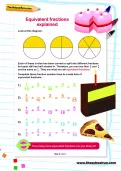
Boost your child's maths & English skills!
- Follow a weekly programme
- Maths & English resources
- Keeps your child's learning on track
The NHS suggests checking your child’s hair weekly, but what exactly are you looking out for?
Read on to find out how to identify headlice and nits.
How to check your child’s hair for headlice
The process of checking for headlice is called detection combing. It can take just a few minutes if your child has short hair, but considerably longer in long, thick or Afro hair.
1. Wash your child’s hair with their usual shampoo, and apply plenty of conditioner – but don’t wash the conditioner off.
The conditioner will make the hair easier to comb, but it also slows down the movement of headlice so they’re easier to trap.
2. Detangle your child’s hair using a wide-toothed comb.
3. Use a fine-toothed nit comb – available from supermarkets and pharmacies – to comb through your child’s hair. If it’s long, use clips to divide it into sections, and focus on one section at a time.
Start at the very roots of the hair, slotting the comb in close to the scalp, and draw it right down to the end of the hair in one stroke.
4. Wipe the comb on a tissue after each stroke. If there are any nits or lice, you’ll be able to see them on the tissue.
5. Work your way right around your child’s head, combing each section at least twice, until you find no more lice or nits.
6. If you find any live headlice, repeat the process on days five, nine and 13. This should ensure that all lice have hatched and been removed. Do a detection combing again on day 17 to check for any more live lice.
If there are no lice, your child doesn't currently have an infestation (hooray!) - but make sure you keep checking their hair regularly.
What do headlice look like?
It can be difficult to spot headlice, especially in long or thick hair, as they’re very small.
If you only see one, you might mistake it for a tiny fly or other bug.
It’s helpful, when checking your child for nits, to do it under a bright light and have a magnifying glass so you can have a closer look at what you find.

Adult lice are wingless, about the size of a sesame seed and have six legs, all towards the front of their body.
They use their legs to cling onto a strand of hair, and particularly like living behind the ears and at the back of the neck, as they don’t like light.
They’re grey, reddish brown or yellowish, which means they’re especially tricky to see in fair hair.
They’ll often still be moving when you wipe them off the nit comb onto a paper towel.
You might also notice itchy bumps on your child’s scalp where the lice have bitten.
What do nits look like?
Nits are the eggs, or empty egg cases, of headlice.
They’re usually laid close to the root of the hair, but because they cling tightly to the hair, you might find them further down as the hair grows out.
Nits that have not yet hatched can be grey, tan or yellow, while empty egg cases are translucent, which means they might look the same colour as your child’s hair.
They’re teardrop shaped and are very small: about the size of a knot in a thread of cotton.

Dull yellow shells remain attached to the hair after the louse has hatched.
Many people mistake nits for grit or sand in the hair, or dandruff. The way to tell them apart is to see whether you can pull the fleck off the hair with your thumb and fingernail. If it’s difficult to remove, chances are you’ve found a nit.
You should treat your child for headlice if you find nits, as this can stop the eggs from hatching.

